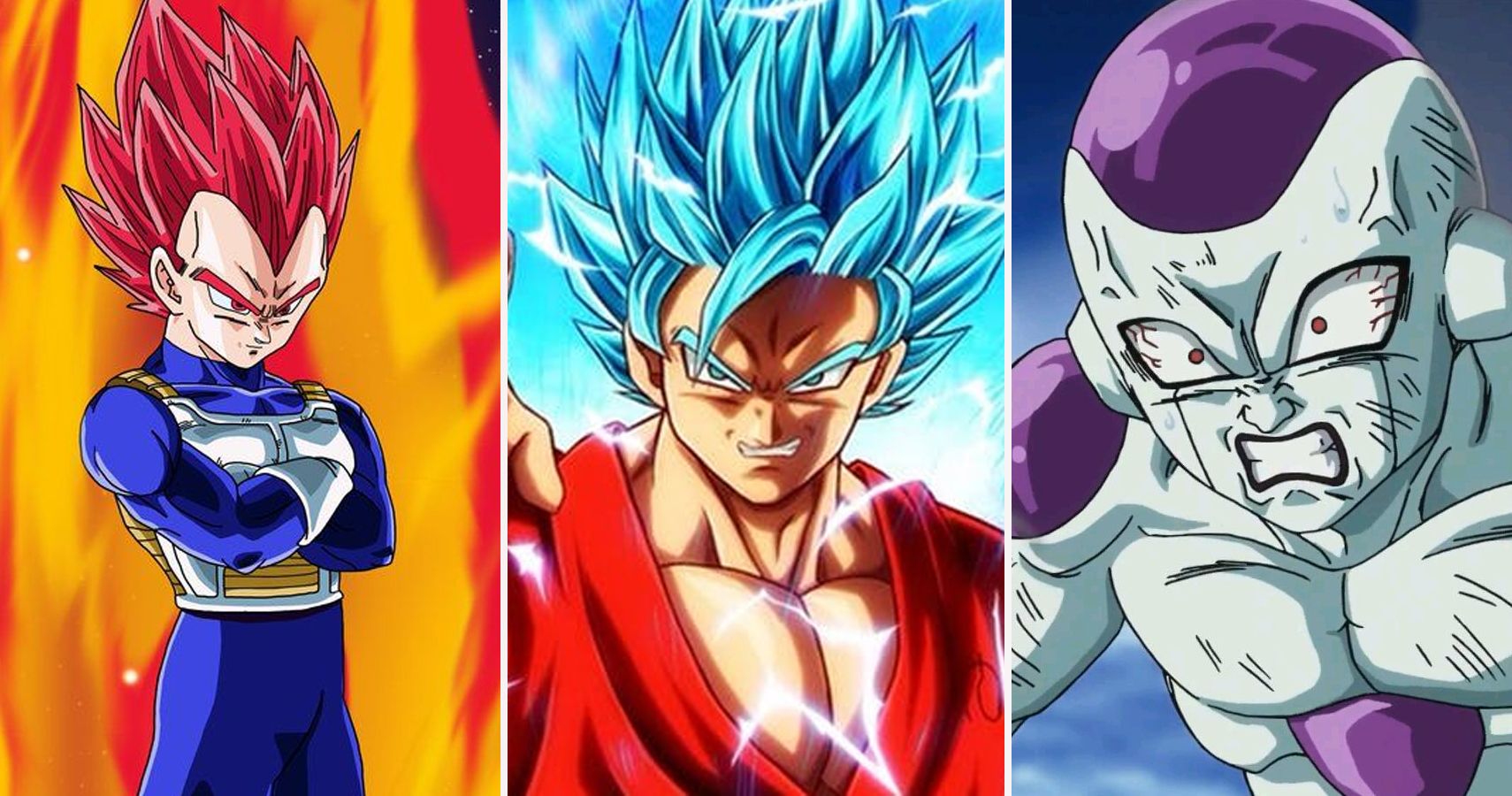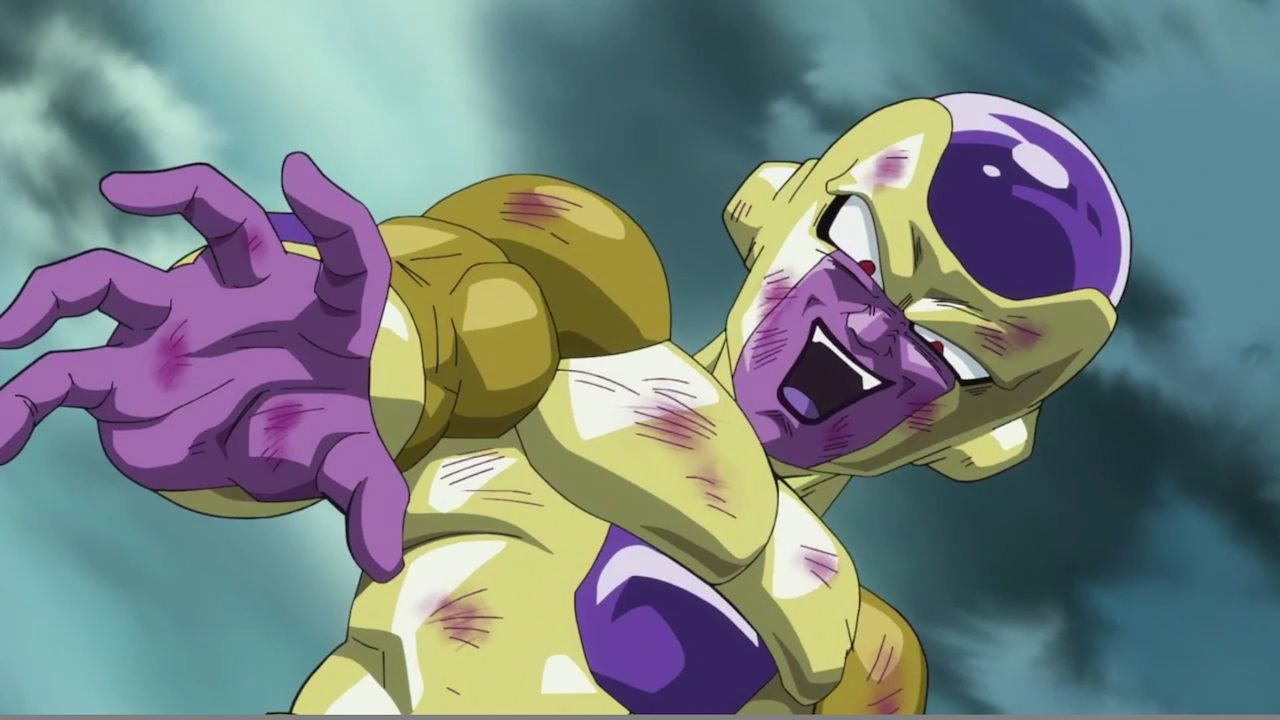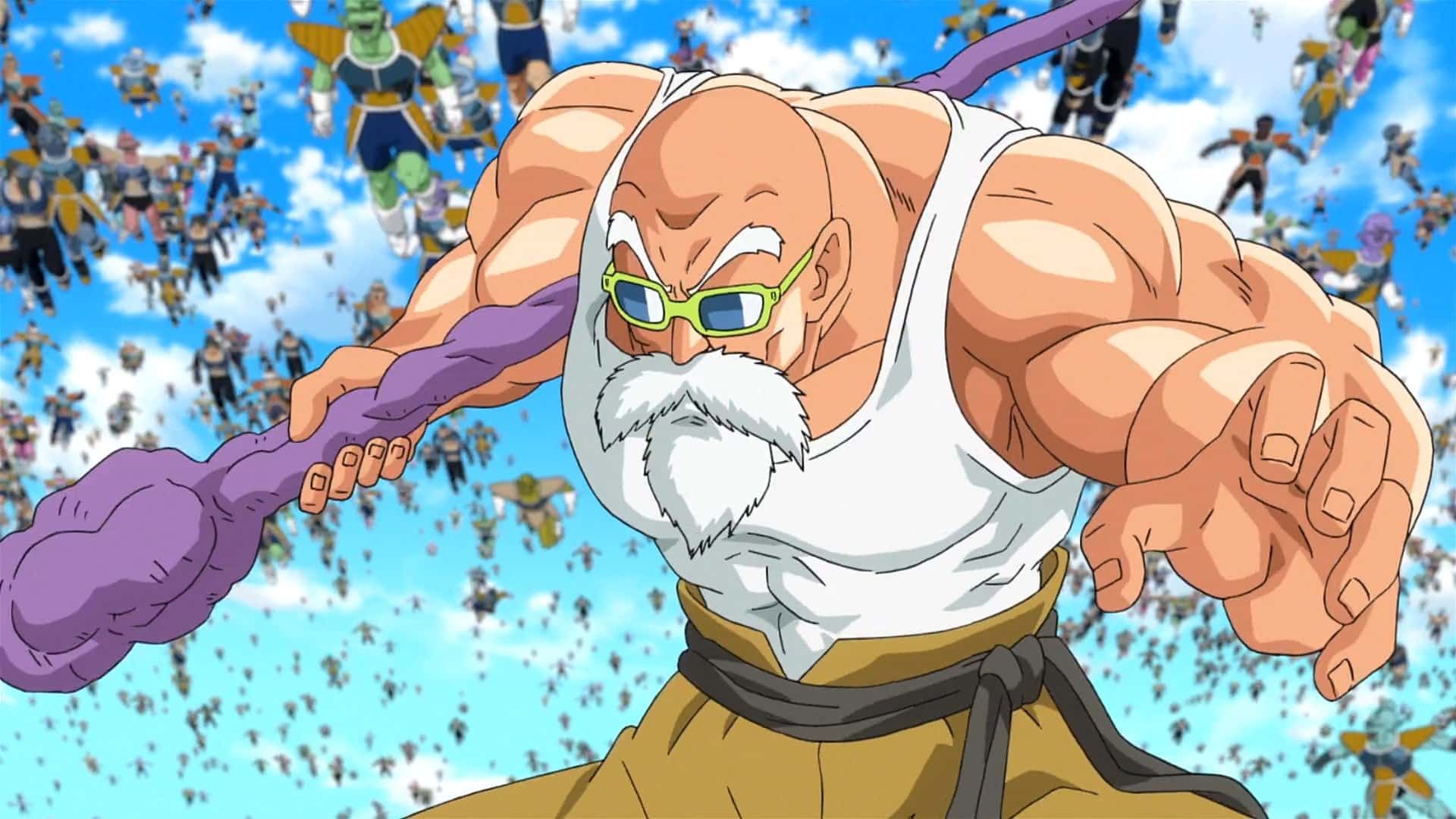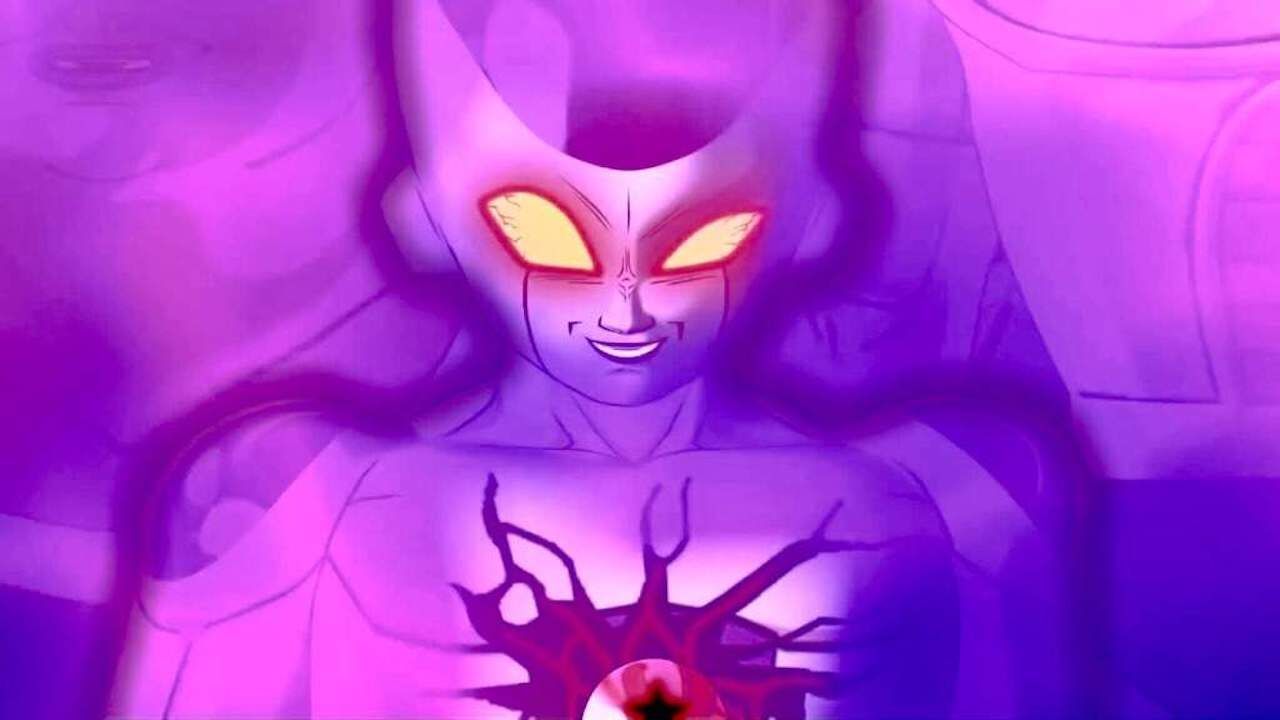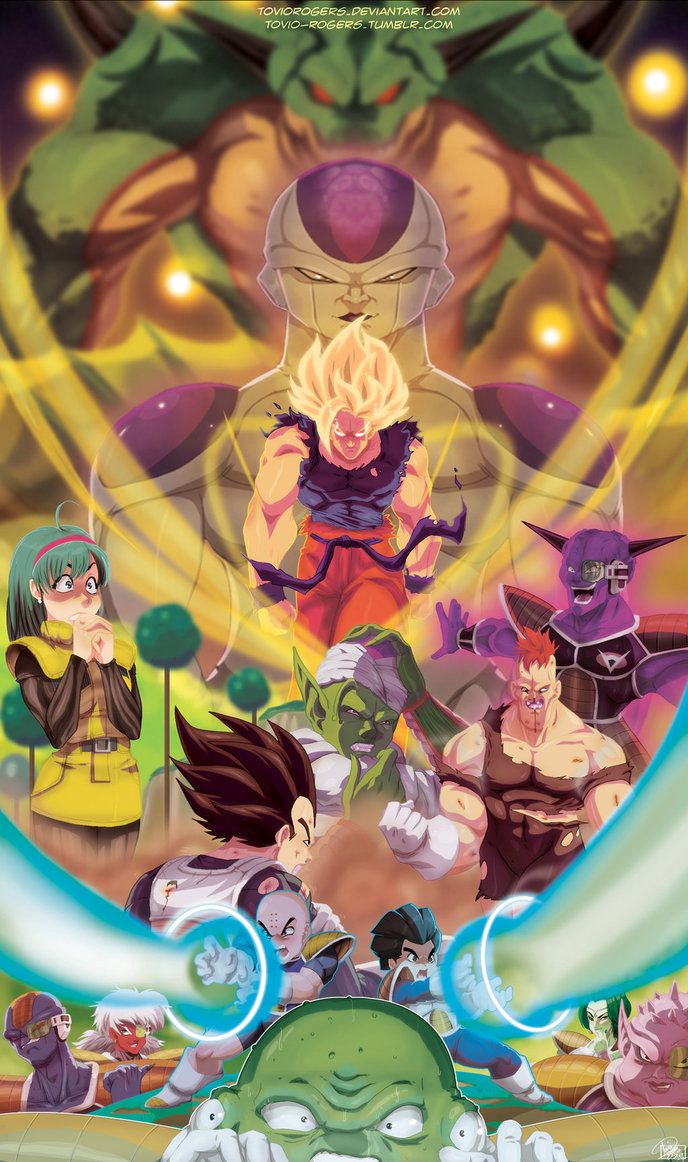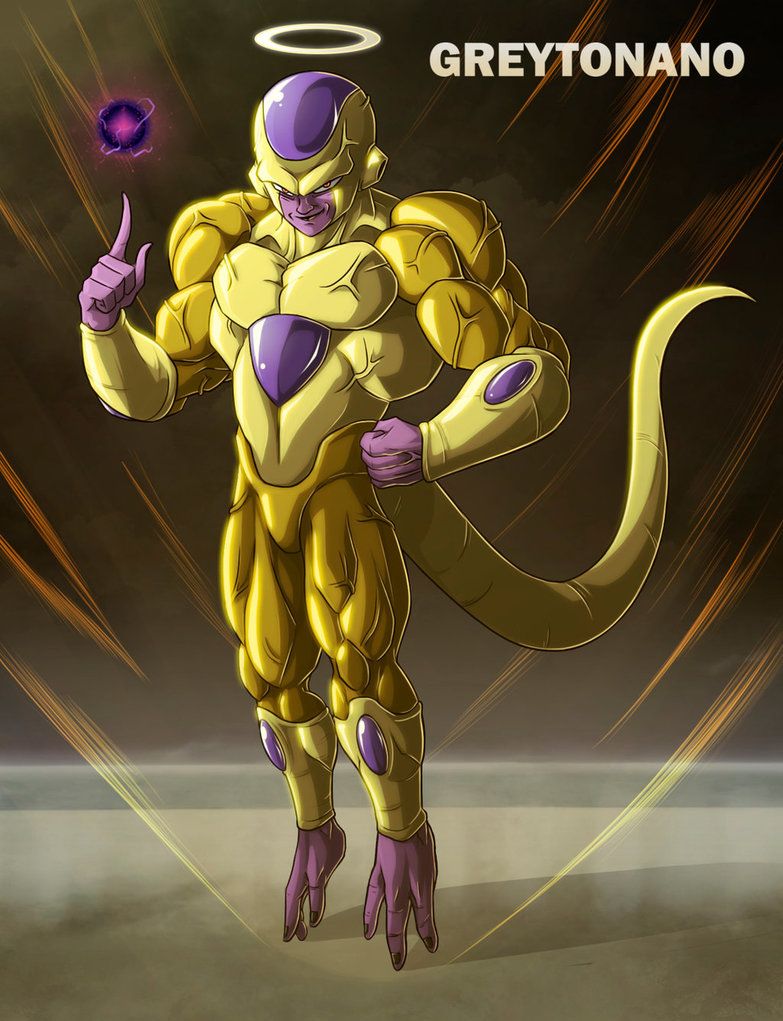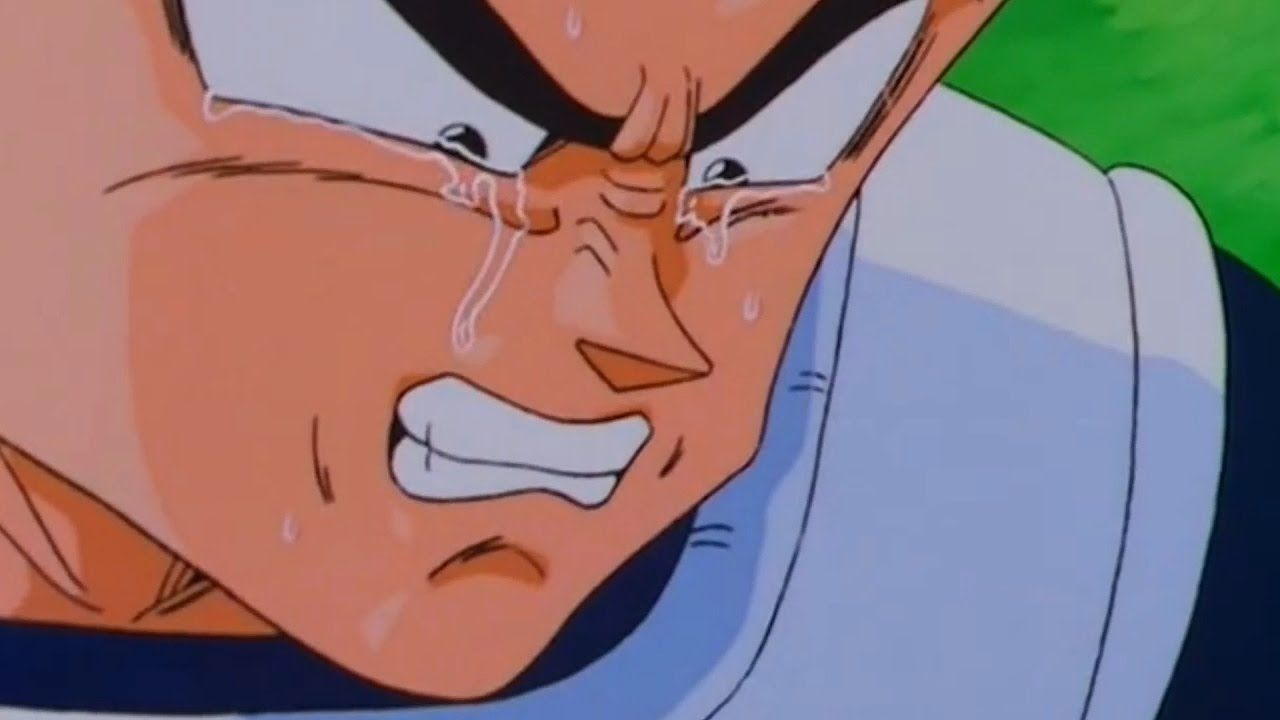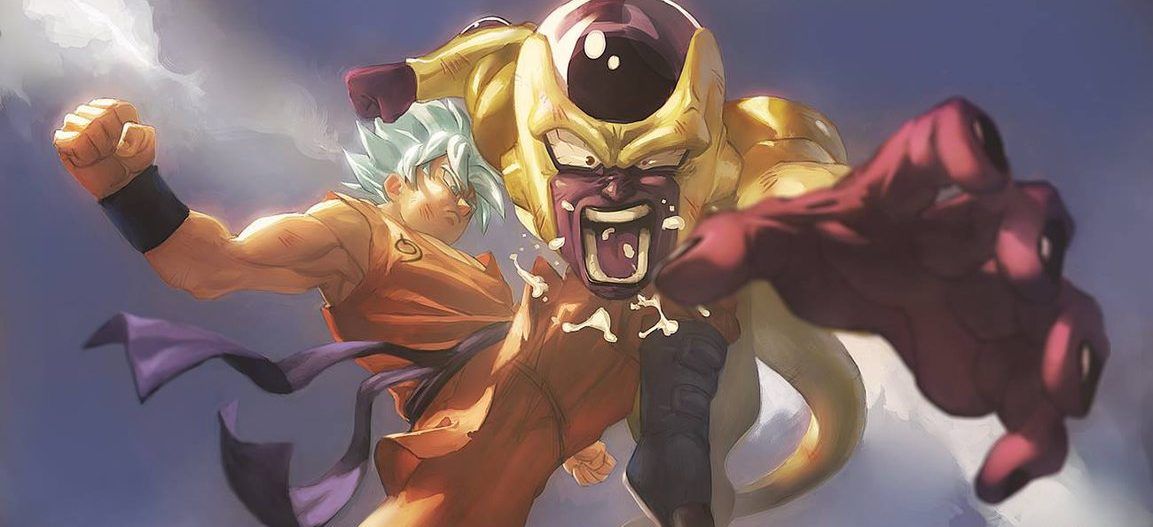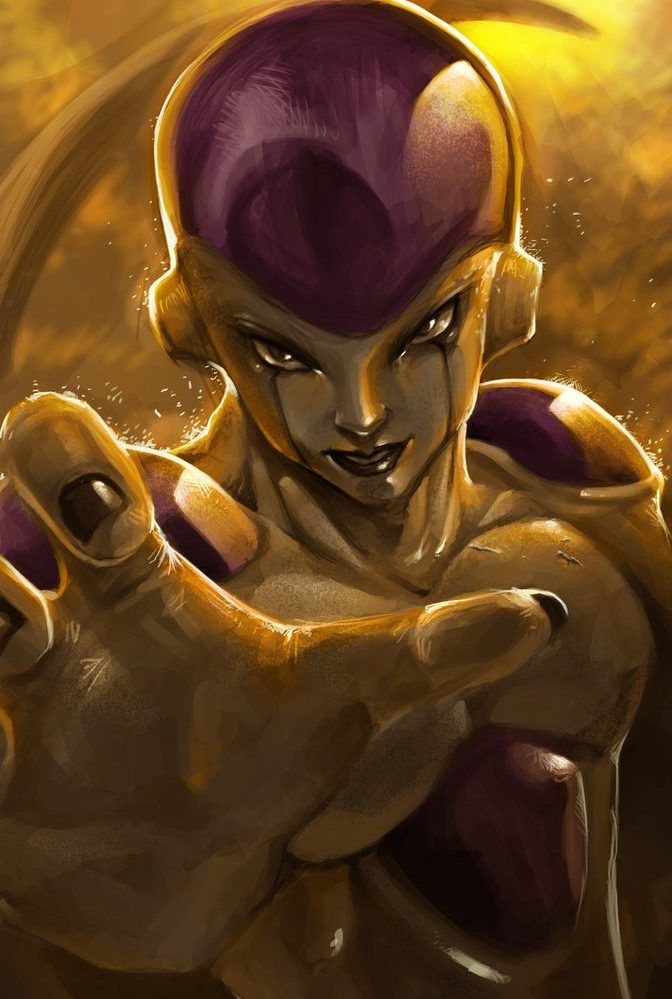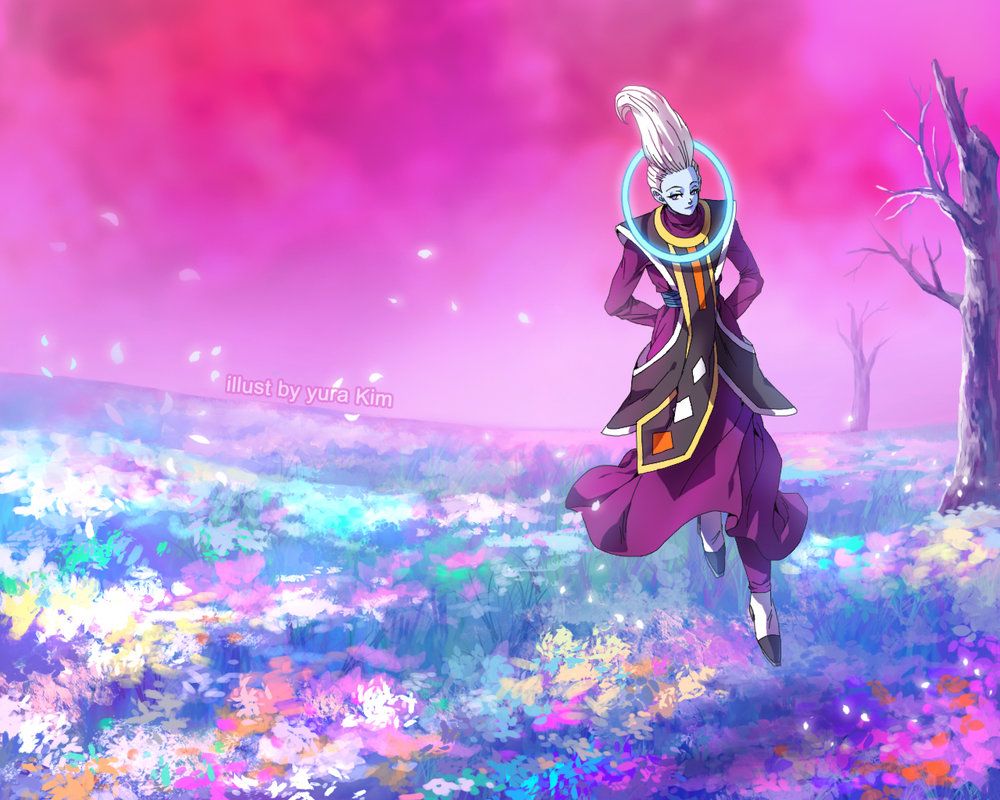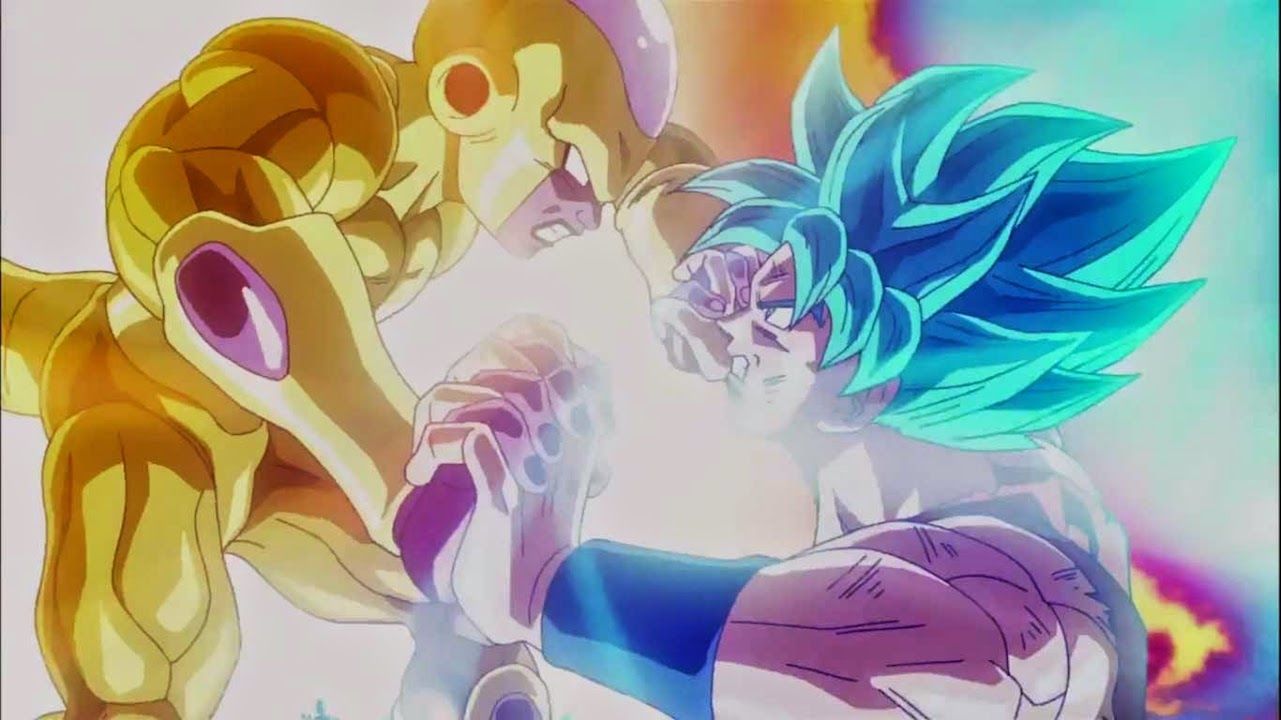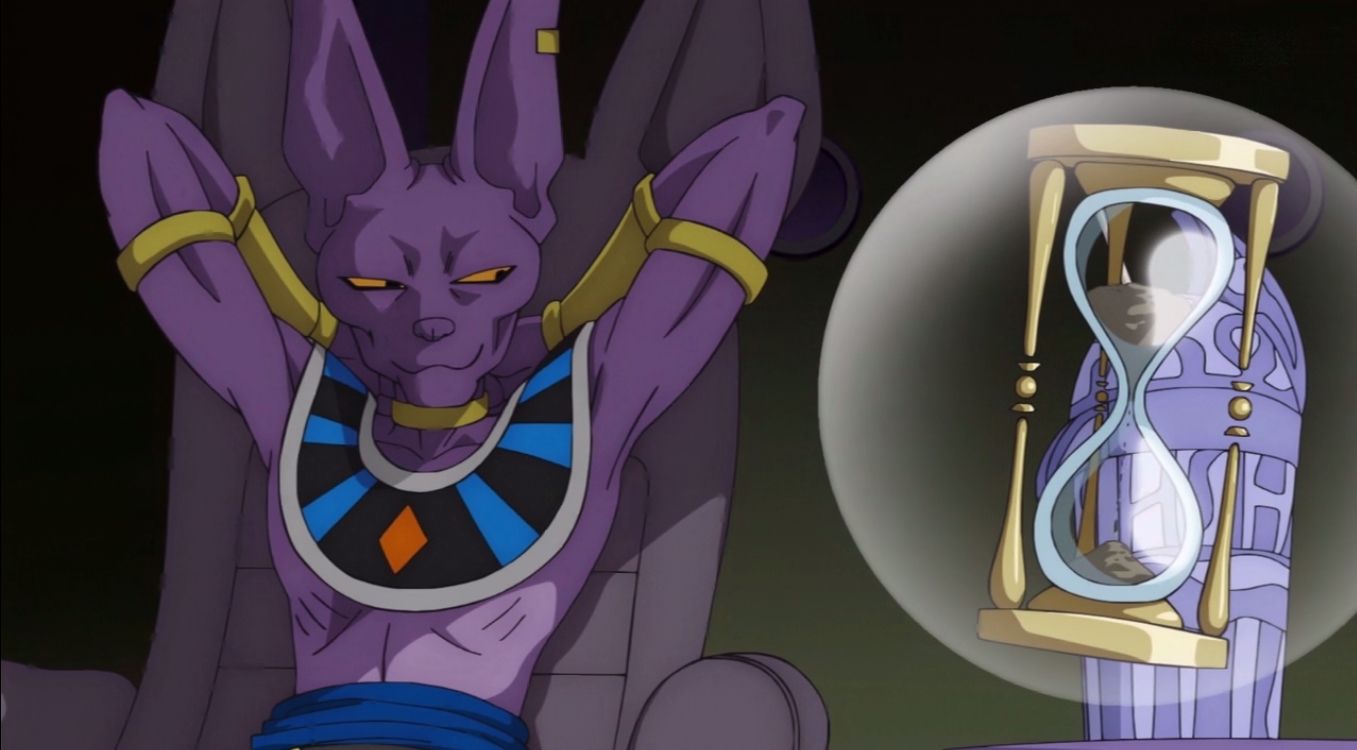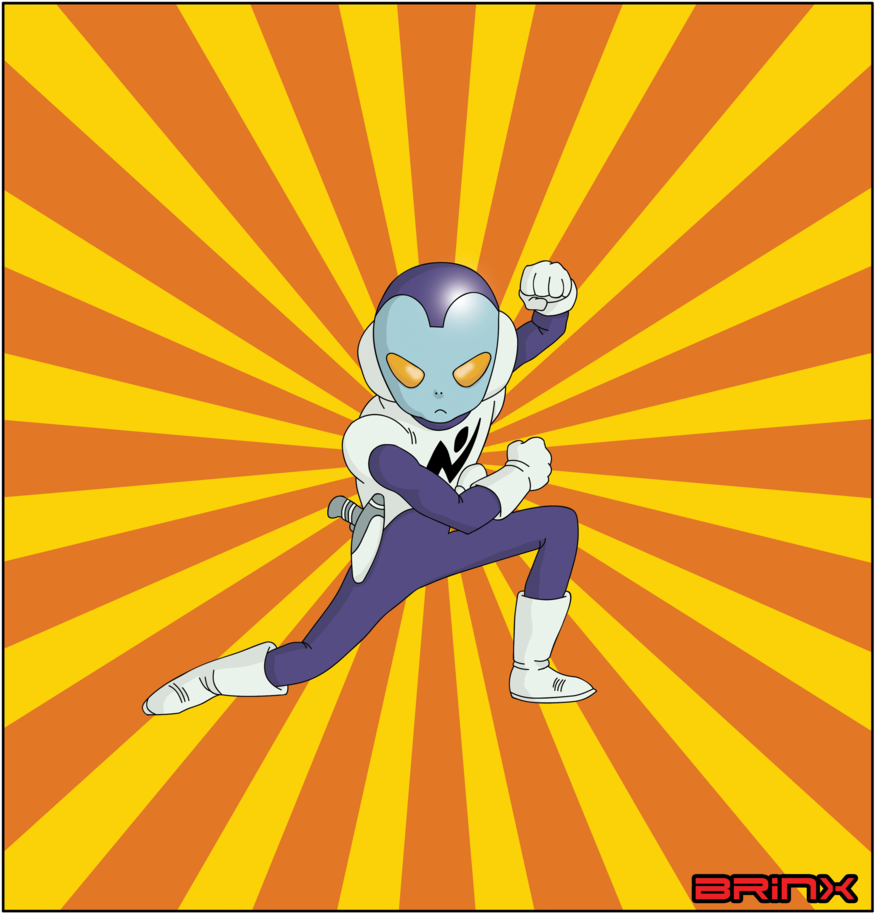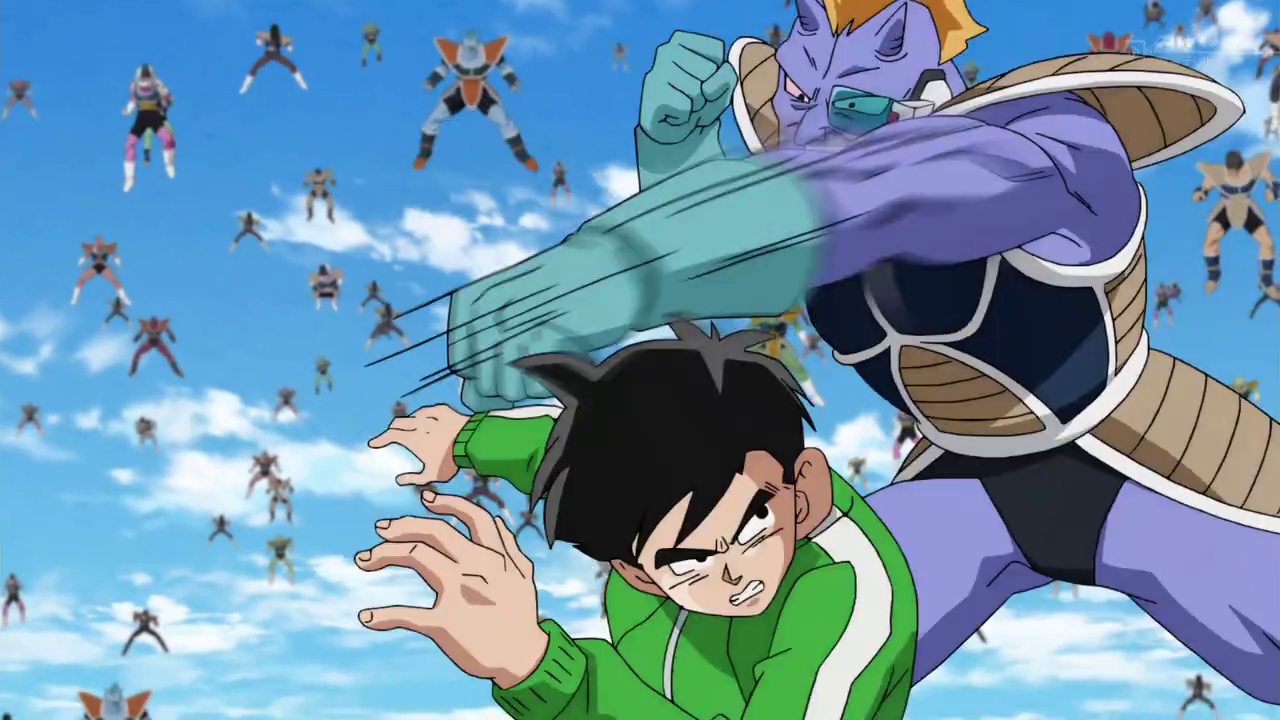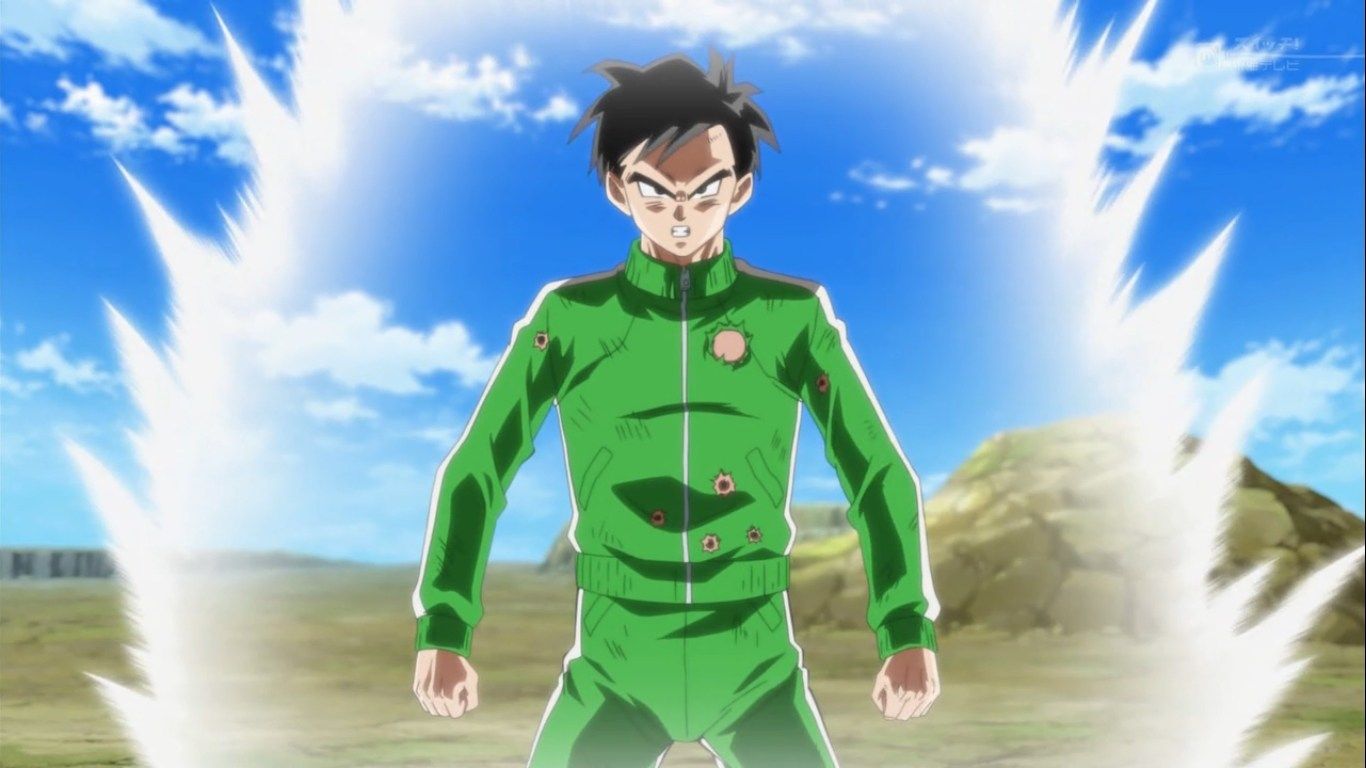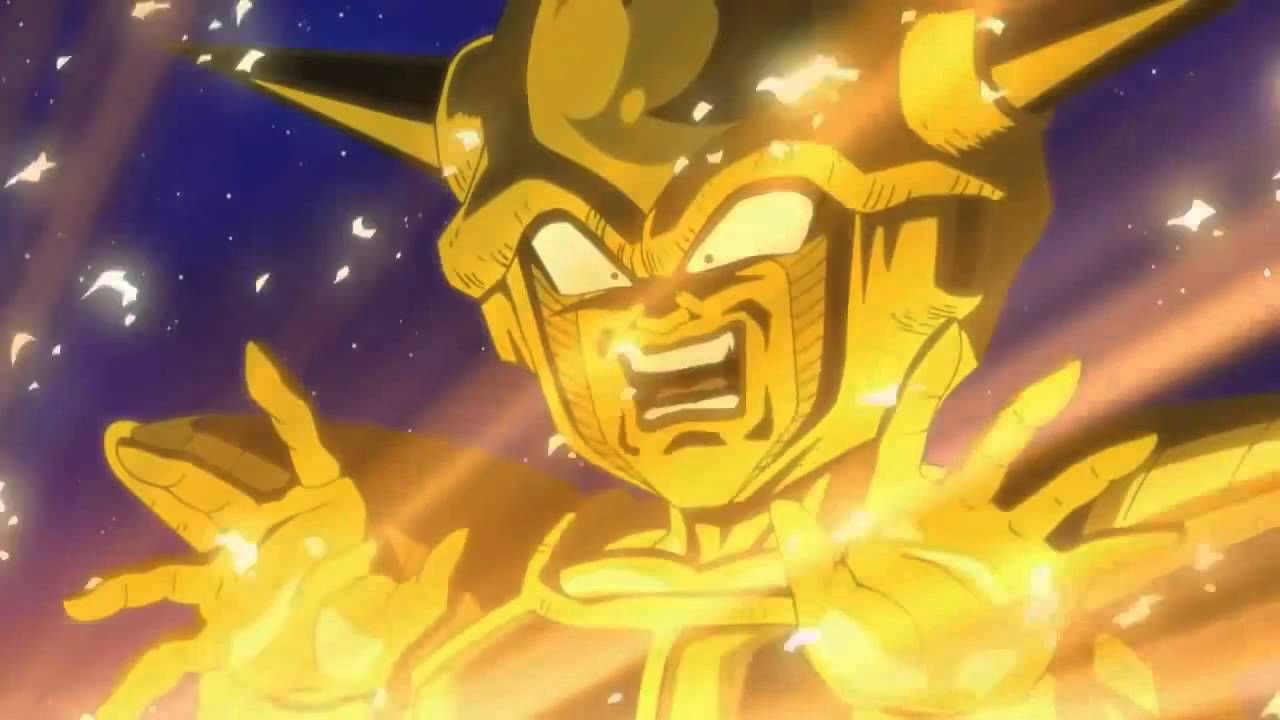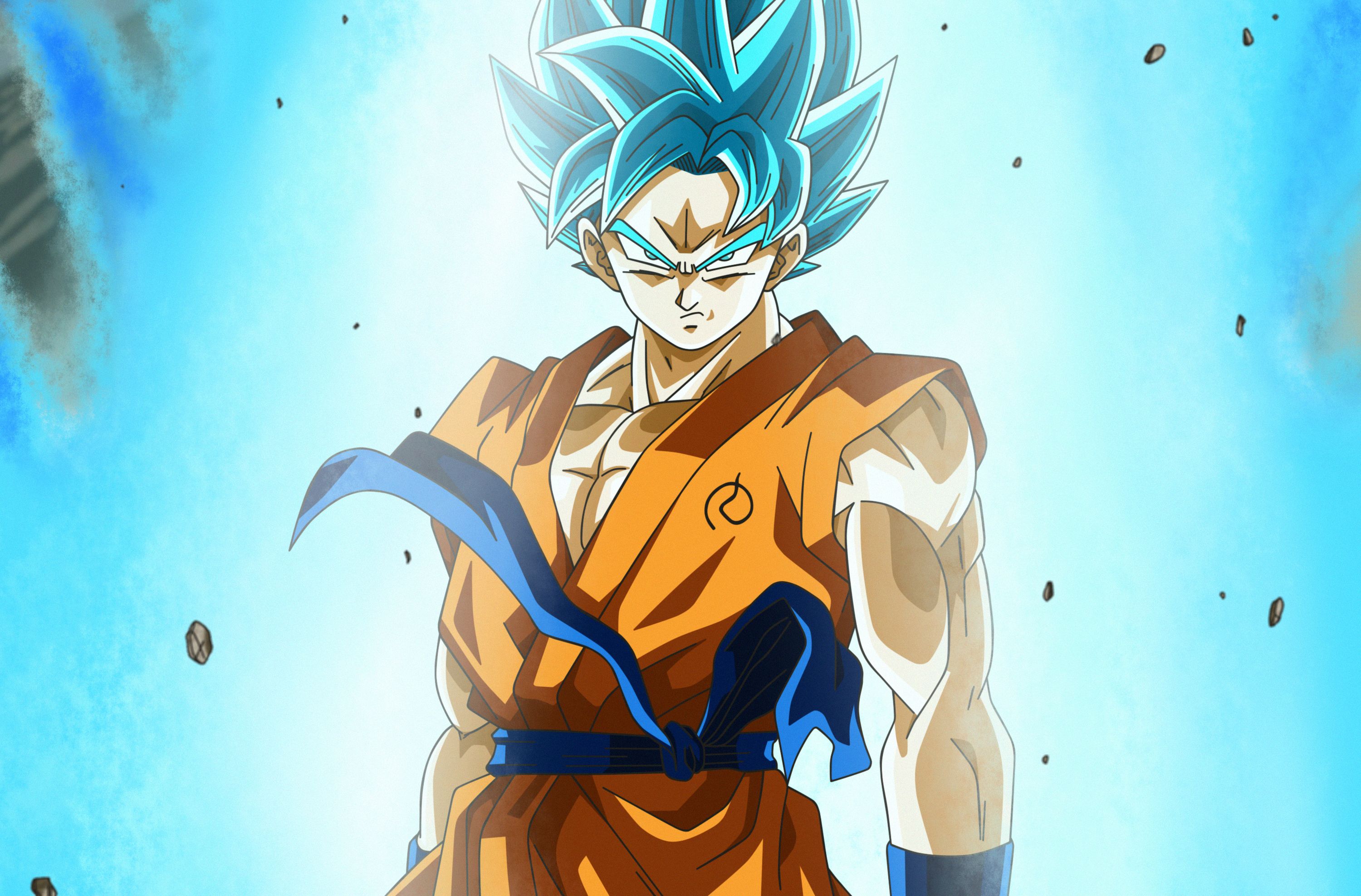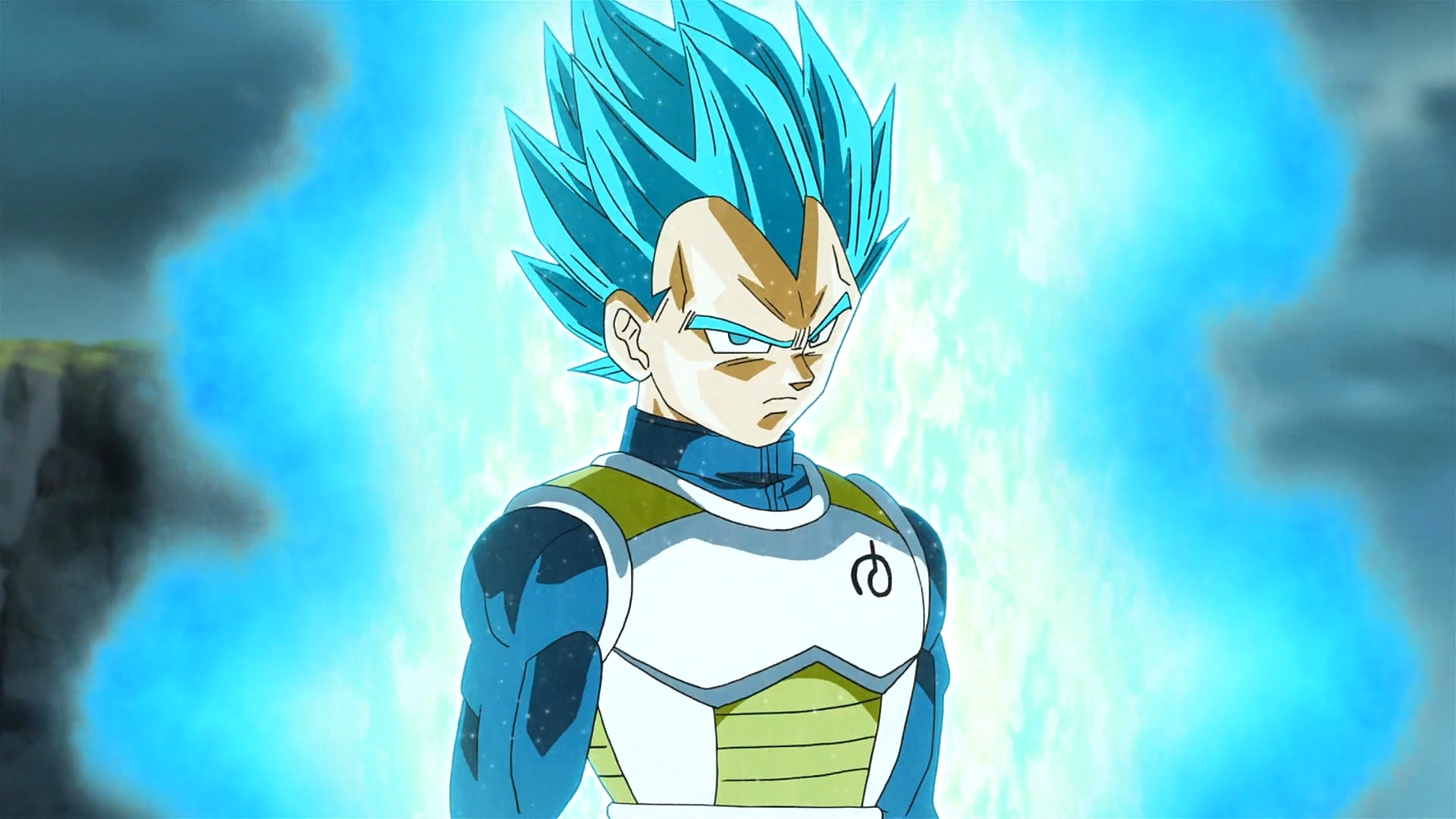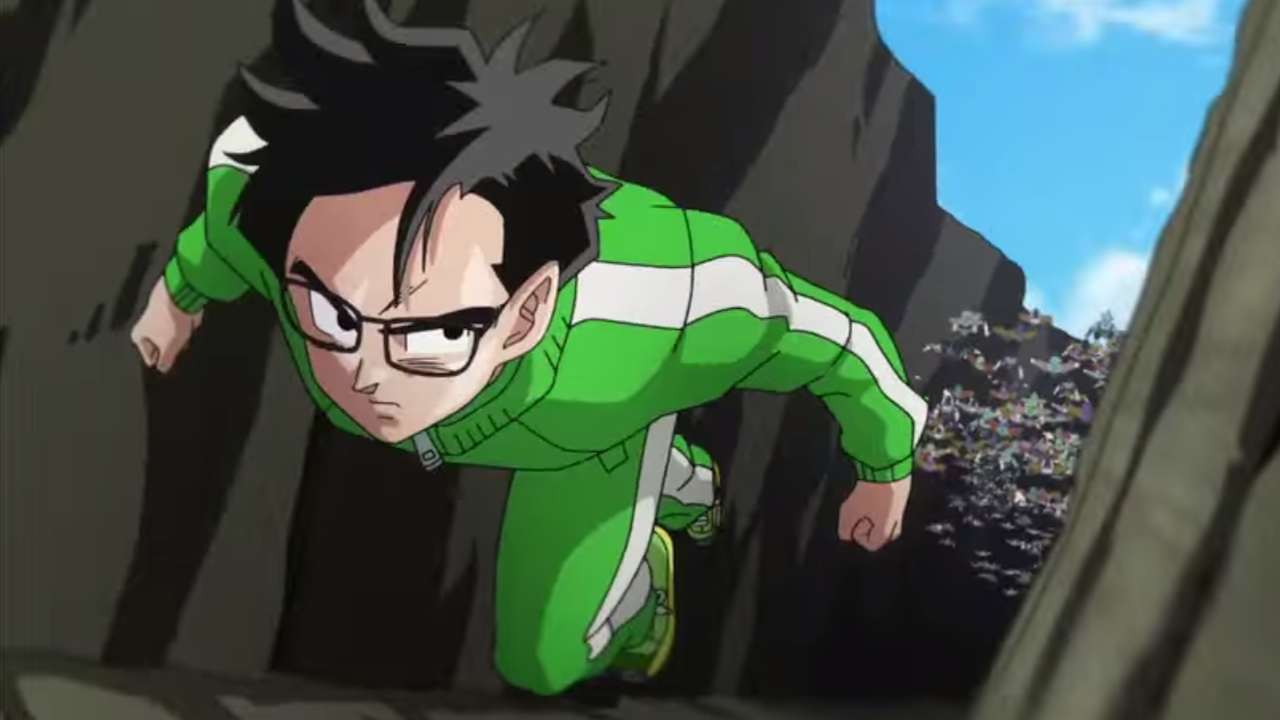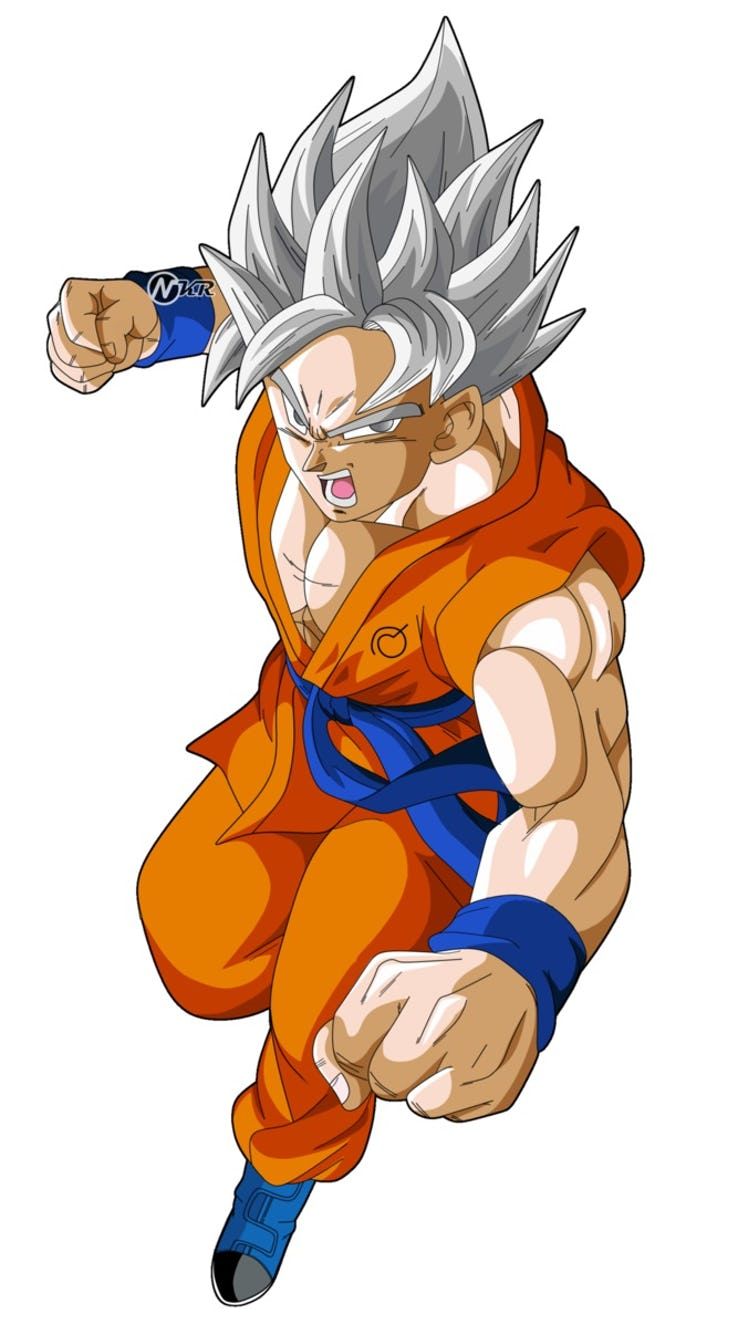Battle of Gods is inarguably the most important movie in the Dragon Ball franchise. Not only did it revive the franchise, it did so by actually moving the story forward while serving as a commentary on Goku’s character. It’s a love letter to everything Dragon Ball, reminding fans what they’ve been missing all these years. Just as importantly, were it to be a one-off deal, Battle of Gods could serve as an alternate finale for the series. Goku is the strongest main character, but not the strongest character overall, and the universe has never been bigger. It’s an open-ended, but appropriate, potential conclusion. Of course, BoG was a money maker unlike any other which meant Toriyama was tasked with whipping up a sequel.
In comes Resurrection F. Widely considered to be the single worst part of Dragon Ball Super, it’s hard not to see the movie as superior to the anime adaptation. It’s missing a few key beats and omits some characters, but its animation is far smoother and has a runtime that is perfectly digestible. While it certainly comes off “lesser” in terms of importance when compared to Battle of Gods, many concepts and tropes introduced in Resurrection F have gone on to become series staples throughout the course of Dragon Ball Super. Most fans disregarded it at release, but true fans know exactly what I’m talking about.
25 Golden Frieza Confirms That Frieza Designs His Transformations
Frieza’s transformations have brought with them much debate within the fandom. Some spend countless forum posts arguing over how big the power jumps are from form to form; others fall into the misconception of believing Frieza’s “first” form is his true form and what’s known as his “final” form isn’t actually his real body; and some even question how these forms work in the first place. If Frieza’s second form looks like his father, does that mean his father is in his second form, as well? Frost’s existence seems to imply a linearity in transforming, but Frieza outright gives us the answer to the last question in Resurrection F.
As soon as he unveils his Golden form, he explicitly states that he made it “familiar” so that Goku could realize immediately what it represented. Obviously, the gold is meant to be analogous to Goku’s golden hair in the original Super Saiyan state, but the real implication here is that Frieza is actually in charge of his own transformations. This means he theoretically designed each form, giving further weight to the idea that King Cold “second” form is just his base and that Frieza designed his personal second form with his father in mind. This also explains why his “first” form is just a smaller version of the second. It’s literally a repressed interpretation.
24 Resurrection F Brings With It Some Weird Implications About Roshi
Having Master Roshi play an active role in Resurrection F’s plot despite formally retiring from martial arts all the way back during the 22nd Budokai stands out as easily one of the strangest creative decisions Toriyama made for the film. Not only had Roshi not been a major character in the series for years by the time the movie released, Yamcha and Chaozu were both implied to be stronger than him throughout the original series’ run. On top of that, the reveal that Roshi had been training all along naturally leads to some very strange, and almost uncomfortable, implications.
According to Roshi, he’s been training in secret all along. This comment allows serves as justification to allow the audience to accept the fact Roshi can go toe-to-toe with Frieza’s army. That said, just how long is “all along?” If Roshi is strong enough to defeat dozens of Frieza Force soldiers, that means he’s, at the very least, strong enough to handle the likes of someone like Cui which means he’s stronger than Nappa, which means he could have helped with the Saiyan invasion all the way at the beginning of DBZ. Roshi’s strength in Resurrection F also means he could have played a pivotal wrong in DBZ era, but chose not to which is far from a great look for the grandmaster.
23 How Resurrection F Sort Of Fixes The Series’ Power Scaling
There’s one throwaway line in Resurrection F that somehow actually manages to fix power scaling if you dig into it. After his four months of intense training, it’s revealed that Frieza’s power level in his first form is now roughly 1,300,000. In the Namek arc, that was around the same number he had for his second form. Given that Goku, in his base, was about equal to Frieza in the film, most fans choose to disregard this number as it creates logistical issues. How could base Goku after training with Whis only be as strong as second form Frieza?
Power Levels were nonsense all along. Go figure.
For starts, let’s think about this another way. It’s not that Goku is as “weak” as second form Frieza, it’s that Goku is as “strong” as second form Frieza. The outrageous numbers associated with later characters are completely fan made. After the Frieza saga, there is absolutely no implication that the characters are getting hundreds of times stronger from arc to arc. Rather, Resurrection F proves they’re not. If the power scaling is so low that Goku, after years of training, can barely beat second form Frieza in his base, this allows everyone to catch up to each other naturally without issue while ensuring the Super Saiyan transformations have legitimate weight.
22 Resurrection F Was Inspired By A Song
Resurrection F is one of the most interesting pieces of media within the franchise thanks in large part due to how creative it is on a conceptual level. Goku and Vegeta are now equals; Frieza is revived solely to regain his spot as the series’ strongest villain, and it was quite literally inspired by a song. For an author who made up the series quite casually as he went along, for Toriyama to see a story arc in a song he did not write is genuinely one of the more fascinating pieces of Dragon Ball history.
Upon listening to the song ‘F’ by Maximum the Hormone, a heavy metal ballad dedicated to none other than Frieza himself, Toriyama stated in an interview, “When I was worrying about the story and whatnot for the next Dragon Ball movie, I heard a song called ‘F’ by Maximum the Hormone, and the idea came to me in a flash.” While fans often debate over whether or not bringing Frieza back was for the best, the logic behind the decision is certainly sound. Frieza has so much pull as an antagonist, along with genuine narrative weight, that reviving him is almost a no-brainer. Of course, Frieza of all people would naturally be this prodigy.
21 Frieza Is All The More Terrifying Thanks To This Movie
Speaking of prodigies, Resurrection F actually manages to take Frieza, one of the scariest villains in the series solely based on what he accomplished, and make him infinitely more terrifying. In the original series, Frieza enslaves planet after planet, commits genocide on a universal level, and is only taken down because Goku, by pure chance, meets all the criteria of an ancient prophecy. Until Goku showed his mug on Namek, Frieza was the undisputed strongest being in the universe and Resurrection F seeks to make that the case again.
By claiming that Frieza never trained a day in his life, Toriyama is able to justify Frieza getting God levels of power from just training for four months. While this is done solely to justify reviving him and putting him on equal footing with Goku, it does imply that Frieza could have easily conquered the entire universe in Dragon Ball Z were he not lazy. Golden Frieza is stronger than every single antagonist who preceded him save for Beerus. With just four months of training, Goku on Namek would have been no match for Frieza. Dragon Ball would end with Frieza wiping out every single character who could stand up to him. Thankfully, Frieza is lazy and never thought to train until it was far too late.
20 Goku Stealing Vegeta’s Win Is A Good Thing
There’s this mentality within the Dragon Ball fandom that Vegeta “deserves” to defeat an arc villain on his own and not allowing him to do so is disrespectful to the character. He’s been with the series since its third year, and has been the deuteragonist for years at this point. In reviving Frieza, it can almost seem like a no-brainer to let him have the win. While he does beat Frieza into the ground near the end of the film, it’s ultimately Goku who finished him off, and that’s perceived as a bad thing for some. In actuality, it’s for the best.
There's no narrative reason for Vegeta to defeat Frieza here. A story has to be more than just fanservice.
Vegeta is not a character who should one-up Goku by defeating an arc villain, especially one like Frieza. Vegeta has a history with Frieza, but Goku and Frieza have a more explicit, vitriolic bond. They have a deeper chemistry that the former pairing simply doesn’t have. Vegeta defeating Frieza also puts him in a position where he’s succeeded where Goku has failed and that runs counter to their entire dynamic. Vegeta is the eternal rival, and that’s where his character thrives. If he “surpasses” Goku in any sense, his arc is nullified. He needs to fail because that’s what makes him compelling. Goku stealing Vegeta’s kill is a necessity to the dynamics at play, Vegeta’s character arc, and the film’s narrative.
19 Goku Finally Defeats Frieza Himself
Another reason why Goku stealing Vegeta’s win against Frieza is a good thing is that it means Goku finally destroys Frieza. Now, he did defeat him on Namek fair and square, and he is responsible for stopping Frieza in Future Trunks’ timeline, but Frieza ultimately falls by Trunks’ hand in our timeline making Goku’s win “debatable” within the fandom. In having Goku get the final blow against Frieza in Resurrection F, he undeniably defeats Frieza and secures himself a very definitive victory.
To be honest, the idea that Goku needs to be responsible for Frieza’s demise in the first place is a silly one. Goku won their fight on Namek and Frieza survived by pure luck. When he arrives on Earth, the only reason Goku doesn’t defeat him is because Trunks got impatient and handled the situation himself. As far as Goku is concerned, he beat Frieza. That said, it is cathartic in its own right to see Frieza eat a Kamehameha full blast courtesy of Goku. The two have such an endearing dynamic, that it’s only fitting Goku be the one to put Frieza under. Ultimately, what matters is that the “Goku never really beat Frieza” discussions are over.
18 Resurrection F Is The Most Thematically Cohesive Film In The Franchise
Whether you love it or hate it, it’s hard to deny just how complete Resurrection F feels as a film and narrative. As a story, Resurrection F is inherently about failure and that’s a concept that shines clearly through each major character’s arc. Goku doesn’t take his battles seriously and ultimately gets shot by Sorbet; Vegeta thinks too much while fighting and squanders his opportunity to defeat Frieza; Gohan fails to train his body during times of peace and ends up unable to stop Frieza’s invasion; and Frieza is so impatient to get his revenge that he fails to defeat the main cast.
What’s even more interesting is the fact that this isn’t a film where at least one character learns from their failure. Everyone fails and that’s it. It’s a very straightforward, very Dragon Ball approach to the theme and one that helps Resurrection F stands out from the franchise’s other films. Battle of Gods is a better film overall due to its plot and arc for Goku, but it’s lacking in a central theme like Resurrection F. Tonally, Resurrection F maintains a rather consistent tension-free yet still dark feel that works for the period of Dragon Ball it takes place in. The same can’t be said for other movies in the series.
17 Whis Foreshadows Ultra Instinct
It’s kind of crazy to think just how important Resurrection F was in hindsight. At the time of its release, it was seen as Battle of Gods’ lesser sequel. It wasn’t exactly necessary, and its plot was questionable, but it was good fun nonetheless. Come Super, however, and the film becomes one of the more essential pieces of Dragon Ball’s lore. Not only do Super Saiyan Blue and Frieza go on to become franchise mainstays in ways no fan could ever expect, Whis straight up foreshadows Goku obtaining Ultra Instinct three arcs later.
Whis foreshadowing Ultra Instinct is the equivalent of Super Saiyan being foreshadowed during the King Piccolo arc.
During the film’s main training segment, Goku and Vegeta struggle as they desperately try to land a single hit on Whis. At the time of the film’s release, there was no way anyone could predict this would end up being a full technique in the future. Rather, it seems that Whis is simply on another level entirely and that’s why he’s able to dodge so smoothly, almost without thought, almost on instinct. Come the Tournament of Power, though, and it’s explicitly confirmed that Whis was demonstrating a casual version of Ultra Instinct to Goku and Vegeta, even going so far to say that, should they fix their flaws, they could master it, too. It gives far more credibility to Goku attaining it in the ToP, doesn’t it?
16 Goku Foreshadows His Team Up With Frieza In The Tournament Of Power
Resurrection F starts to feel all the more important when you realize that, alongside Whis’ demonstration of Ultra Instinct, Goku and Frieza teaming up is actually foreshadowed. This isn’t a case of flimsy foreshadowing where Frieza’s revival in general seemingly implies he’ll be coming back or playing a major role, either. Goku actually mentions how Frieza would make a great sparring partner in his current state when they meet up. At the time, it’s a reminder of their fresh pseudo-rival. In hindsight, it’s a clear indication of how their paths will cross again.
While they aren’t sparring partners in a conventional sense during the Universe Survival saga, Goku’s recruitment of Frieza is basically one long training session. The two trade blows like maniacs, pushing each other to their limits, all the while knowing they’re on a relatively equal playing field. Come the end of the arc, Whis outright revives Frieza allowing him to participate in future stories. While it’s unlikely Frieza will ever assimilate into the group like the likes of Vegeta or Piccolo, hit continued existence does mean he and Goku can properly train together in the future. What better way to push yourself than with your lifelong enemy?
15 The Dragon Ball Z To Battle Of Gods’ Dragon Ball
It’s always worth remembering that, despite the fact the series is split between two anime adaptations, Dragon Ball is simply one story from Goku meeting Bulma to Goku flying off with Uub. Any attempt at splitting it is contradictory to the author’s vision and the manga is fairly consistent in its progression. That said, Dragon Ball and Dragon Ball Z do represent different ideologies in a sense. The former is a lighthearted adventure story with plenty of jokes to go around while the latter is a genuine action-drama with an emphasis on a darker style of storytelling.
Knowing that, it’s easy to see Battle of Gods and Resurrection F as mirrors to the Dragon Ball-Dragon Ball Z split. BoG is a much softer film that spends its first half mostly catching up with the main cast and putting them into humorous scenarios. It’s very slice of life in nature. RF is effectively a drama right out the gate. It still has its silly moments, but they’re downplayed in favor of large-scale action. BoG has three main fights while RF dedicates an entire sequence to one massive battle royale and then features three major fights against Frieza alone. That’s far more reflective of the Z-era than BoG.
14 Who In The World Is Jaco?
Join me as we go back in time for but a moment. The year is 2015, you’re sitting in a packed cinema enjoying yet another Dragon Ball picture show. Never in your lifetime did you believe you would see Frieza on the silver screen when suddenly a purple jumpsuit wearing alien appears on screen and Bulma acts like they’ve known each other all along. “Who is this hooligan?” you ask yourself. “It’s Jaco,” says the man next to you as he hands you a copy of Jaco the Galactic Patrolman. The man read your mind. He’s Akira Toriyama.
The biggest crossover since Infinity War.
Alright, chances are that never actually happened, but Jaco’s inclusion in Resurrection F is weird, right? Even though this is the first time he’s been featured in Dragon Ball, this isn’t the first time he’s appeared in the canon. In 2013, Toriyama released a one-shot manga starring the purple alien and ended up tying it into the Dragon Ball canon. Jaco even meets Bulma at one point. Jaco’s inclusion in Resurrection F is not only a reference to the spin-off manga, but also a way to legitimize the events of Jaco in the Dragon Ball universe, especially since the compiled release ends with Dragon Ball Minus, a new prequel to Dragon Ball.
13 Resurrection F Has The First Real Group Battle Since The Cell Saga
Group battles are that rare secret ingredient in Dragon Ball that, while seldom used, always manage to make for a great time. When done by Toriyama, at least. GT had a few of them, but they were never anything to write home about. In the original series, Toriyama notably used one for the first fight against Nappa, the first major fight against Frieza, and the fight between the Z-fighters and Androids 17 and 18. After that, though, Toriyama stopped group battles altogether.
It’s no surprise that, when writing one into the script of Resurrection F, it ends up the highlight of the film. Seeing the supporting cast absolutely demolish Frieza’s army is cathartic and exciting, shining the spotlight on characters who have been out of it for ages. It would have been easy to just include the OG Namek crew, but adding in Tien, Roshi, and Jaco creates a new layer to the fight and ups the style at play. For a first viewing, it can be easy to get a bit impatient waiting for Goku and Vegeta to show up so the fight against Frieza can begin, but looking back it’s quite obvious that the group battle was the best part of the film. It’s not often we get to see these characters interact, let alone fight. It’s a nice refresher to the typical DB formula.
12 Gohan Is The Only Character Who Doesn’t Use Their Signature Technique
On the subject of the group battle, it also serves as a great reminder of what everyone’s signature technique is. Tien uses the Kikoho, his life draining, full stop Ki blast that he most notably used against Nappa, Cell, and Buu; Krillin uses the Kienzan, a disk made out of a pure, concentrated Ki which he used to slice off Frieza’s tail on Namek; Piccolo uses the Makankosappo, the drill that pierced both Goku and Raditz at the start of Z; Roshi uses the Kamehameha, a technique he developed and one synonymous with Dragon Ball; and Gohan uses… a generic Ki attack.
It’s genuinely very strange that Gohan is left out of the signature technique scene. He’s included but in the blandest way possible. The Masenko very easily could have acted as his main technique. It’s something a move exclusive to him and the closest ability he has to the Kamehameha (outside the actual technique, of course). It really just hammers in how far Gohan has fallen by the start of the film. He struggles to turn Super Saiyan, he gets one-shot by Frieza, and he can’t even think up a move to use while all his pals style on him.
11 Frieza Technically Wins
It’s not often a Dragon Ball villain actually manages to succeed in their main goal. In fact, not a single villain in the original series accomplishes what they seek out to: Commander Red doesn’t get his wish, King Piccolo’s reign only lasts for a day, Piccolo doesn’t avenge his father, Vegeta doesn’t get his wish for immortality, Frieza fails to wipe out the Saiyans, Cell never actually defeats Goku in a fair fight, and Majin Buu actually gets weaker on his quest to become the strongest being in existence. Golden Frieza, though? He blows up the Earth.
Does it still count as revenge if an angel literally resets time after you win?
All Frieza wanted was revenge for what Goku did to him on Namek, and he wanted that revenge by making the Earth suffer. While he doesn’t extinguish the Earth’s population in a meticulous manner, he does utterly humiliate Gohan to show the Z-fighters just how outclassed they are. When he and Goku fight, he loses, but he has Sorbet sneak attack Goku, forcing him to watch as Vegeta fails to finish off Frieza. Whis ends up reversing Frieza’s destruction of the Earth, but that doesn't change the fact that Frieza got everything he wanted. If Whis wasn’t around, Dragon Ball would have ended right then and there.
10 The Importance Of Keeping Your Guard Up: Goku’s Character Arc
Resurrection F is a movie all about failure, and it’s about time we dug into how that’s reflected in the film’s main character arc. While training on Beerus’ planet, Whis tells Goku that his greatest flaw is lowering his guard during battle. Obviously, Goku is a capable martial artist who knows how to fight. The issue is when he starts getting chummy with his opponents. This is a trend we see often throughout the original Dragon Ball, most notably in the Namek arc when Goku turns his back on a wounded Frieza only for Frieza to launch an attack on him.
Goku hasn’t really learned his lesson. Near the end of the film, Goku manages to subdue Frieza and even lambaste him on how flawed his plan was. The anime takes it one step further by even having Goku power down while confronting Frieza. Sorbet takes advantage of this and shoots Goku from behind. In the movie, he keeps Blue active, but he lowers his Ki completely since he no longer sees Frieza as a threat. If Goku simply kept his guard up and finished off Frieza, Vegeta would have never had to step in and Whis wouldn’t have to rewind time to save the day.
9 Living In The Moment: Vegeta’s Character Arc
Remember earlier when I mentioned how Goku taking Vegeta’s win right from underneath him was a good thing? Here’s another reason why. Vegeta’s arc throughout the whole film is his inability to simply live in the heat of battle. At the same time Whis tells Goku he needs to start taking his fights more seriously, he also informs Vegeta of his fatal flaw. If Vegeta actually beat Frieza at the end of the film, this point would be rendered pointless and the movie would lose the one thread tying all of its plots and characters together.
Once Goku gets shot by Sorbet, Vegeta finally gets his chance to fight Frieza. To be fair, it’s not much of a fight at this point. Frieza’s beyond exhausted and on the verge of losing Gold, and Vegeta is completely untouched along with having watched Goku and Frieza’s fight with a very attentive eye in case things went south. Despite all of Vegeta’s advantages, however, he ends up overthinking how to defeat Frieza. As Frieza grovels at his feet, Vegeta hesitates and can’t decide how to finish him off. Frieza takes advantage of this situation and blows up the Earth on the spot. Saiyans never learn.
8 Be Responsible: Gohan’s Character Arc
Saiyans genuinely never learn, and Gohan is living proof of that philosophy. Even though Gohan was never much of a fighter throughout the course of Dragon Ball Z, he always had someone backing him to ensure he fought during the first three arcs. Piccolo trained him in the Saiyan arc, Krillin kept him active on their trip to Namek, and Goku turned Gohan from a boy into a full-fledged Super Saiyan during the Cell saga. Come the Buu saga, though, and Gohan has nobody to keep him in line. He gets out of shape and then spends most of the arc realizing how much of an idiot he was.
For the love of Kami, please start training again, Gohan.
Come Resurrection F and fate seems to have repeated itself. In the comfort of his father’s revival, Gohan drops all pretense of being Earth’s savior and stops training altogether. He loses his gi, loses his ability to turn Ultimate, and struggles beyond belief to turn Super Saiyan when push comes to shove. It’s an embarrassing turn for the character and one that hammers in his greatest flaw. Unlike with Goku and Vegeta, however, Gohan’s flaw consumes him entirely. In RF, Gohan barely exists as a character beyond his flaw. It fits into the movie’s overall theme, but it ultimately comes off derivative of Gohan’s much better, and far more narratively appropriate, character arc in the Buu saga.
7 The Dangers Of Impatience: Frieza’s Character Arc
In many ways, Frieza is almost the main character of Resurrection F. The movie’s title directly alludes to him, he drives the central plot, and he’s in more of the movie than anyone. Naturally, as this is a Dragon Ball property, Goku is the clear protagonist, but it’s hard to deny the focus and care Frieza gets, especially in regards to his character arc. Despite learning how to train and dedicating himself to beefing up for Goku, Frieza still succumbs to impatience and falters.
His arc is an impressive one because, in-universe and out, it’s made to seem like Frieza was being patient. He trained for four months, after all, and made legitimate progress. The problem with Frieza was that, once again, he erroneously believed he was the top of the totem pole and decided to act on that hunch. He didn’t think or care to play things safe. The film almost frames Frieza’s decision to train as him learning to overcome his fatal flaw, but he actually just postpones when the flaw will catch up to him. It’s a classically tragic arc that sees a character crumbling under the weight of their own actions and it’s made all the worse because Frieza genuinely believed he solved the problem.
6 Super Saiyan Blue Was Almost Super Saiyan White
In the same way gold, or yellow, has become Super Saiyan’s identifiable color, to the point where many franchises parody or reference it as a sign of transformed power, white has become a color intimately associated with Ultra Instinct. It’s hard to imagine the color in context to Dragon Ball without immediately thinking about Goku’s newest transformation. It’s similar to Blue in that sense. For all the flak the new colors get, Dragon Ball has done a swift job at solidifying an aesthetic identity for itself with a wide palette.
Blue is the new white.
With that in mind, it’s kind of crazy to think that Super Saiyan Blue was almost Super Saiyan White. While coming up with Resurrection F, Toriyama dabbled with the idea of making Goku and Vegeta’s next form white. He ultimately relented as he felt it would clash with Zamasu’s design later on and opted for Blue. A fairly harmless piece of trivia in its own context, it is interesting to think about how DBS would have wound up had Toriyama kept the form white. Ultra Instinct would have been redesigned entirely, along with Zamasu most likely, and SSB, now SSW, would get even more complaints for being visually similar to SSJ. A simple color swap would have caused a chain reaction for the entire series.

